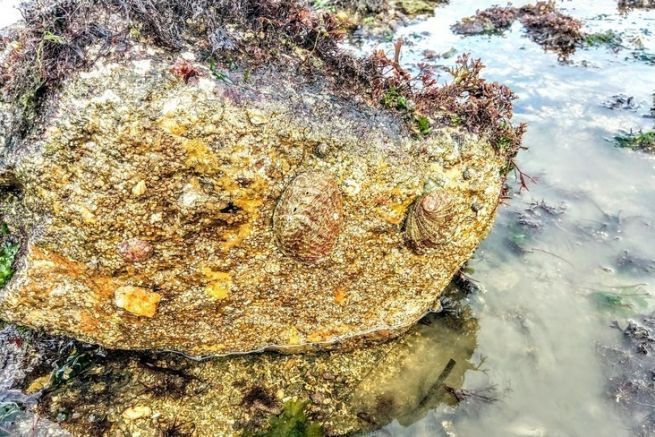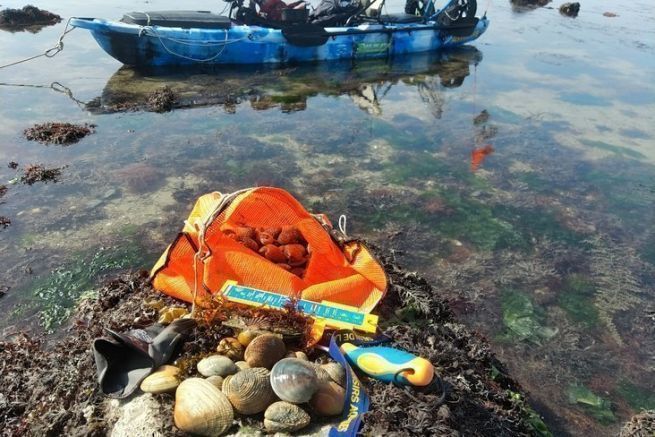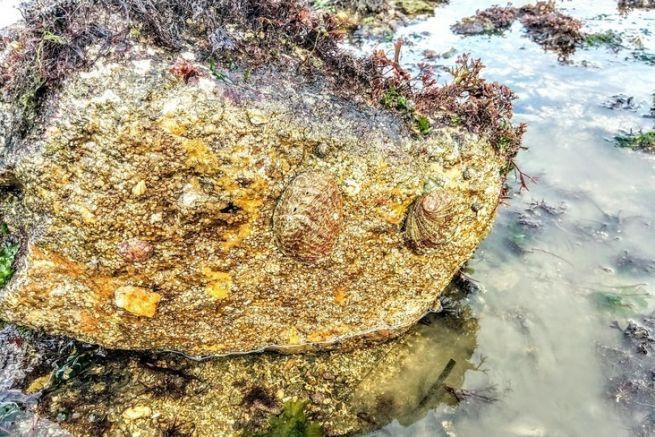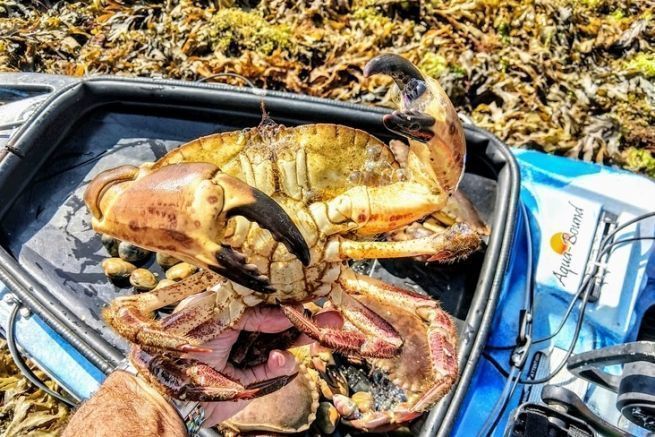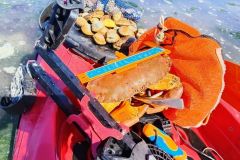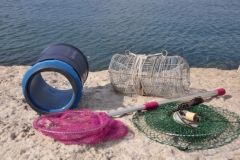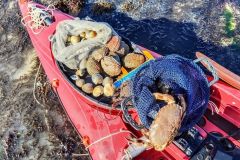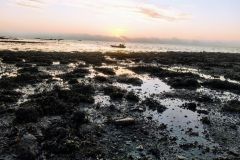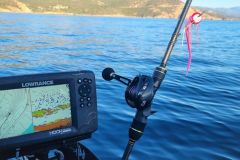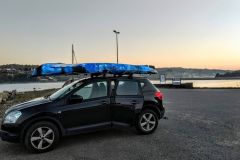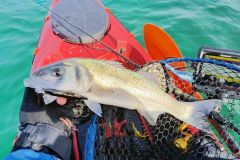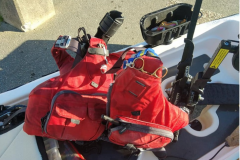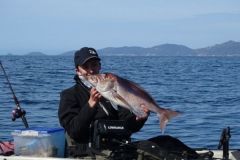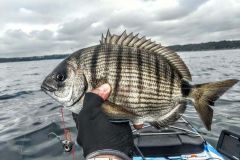The kayak, the ideal tool
The use of the kayak in the search for abalone spots will allow us to find them even at lower tides. Let's say that we can hope to pick up some from 90 of coefficients. While fishing on foot, you will have to wait for much stronger coefficients.
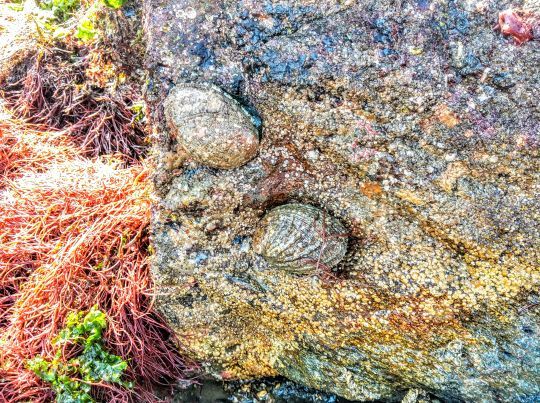
These animals live hanging under the rocks, in areas of strongly oxygenated currents. Once they have found the right rock, with food coming to them in abundance, they do not move much. It is necessary to start by finding these zones, it will be necessary to make a lot of prospection before succeeding in filling its basket.
I spotted especially the types of algae that are on the area and in particular the red algae, Palmaria palmata. This seaweed is the favorite of this grazing gastropod, the zones of big kelp are also interesting. In any case, it is necessary that it brews, the abalone needs oxygen.
Abalone, a regulated shellfish
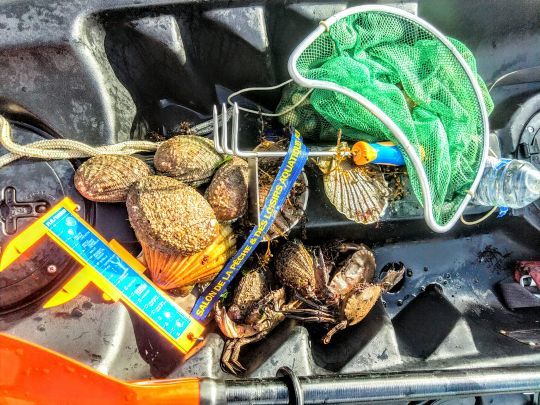
Be careful, there are restrictive regulations on this shellfish, and they can vary from one region to another. In the Brest bay, for example, the shellfish must be at least 90 mm in size and you must not put your head under water to harvest them. There is a quota of 20 per day and per fisherman, which is more than enough for a family consumption. Harvesting is permitted from September to May.
In some places, there is even a minimum tidal range to respect. Do not hesitate to ask for local information on these regulations. Checks are frequent and fines are high in case of non-compliance with the regulations in force.
Abalone collection
They are picked up by hand or with a crab hook. Avoid picking up individuals that are too small and especially avoid injuring them. If possible, when in doubt, measure them on the rock. There are very practical tide gauges for this, such as the Flashmer caliper. You can find it at most distributors.
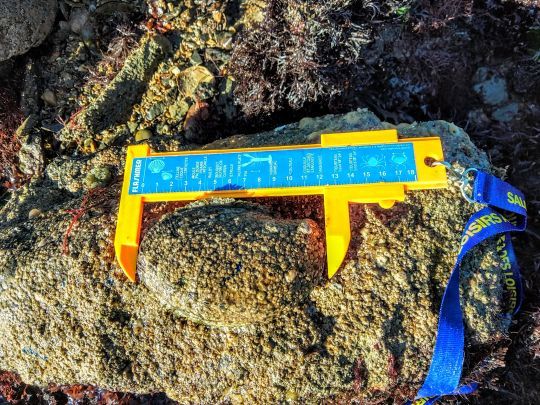
It is necessary to know that the abalone is hemophilic and in case of injury there is a big chance that it dies. We can also see that it looks perfectly like the stone under which it is stuck.
How to eat abalone?
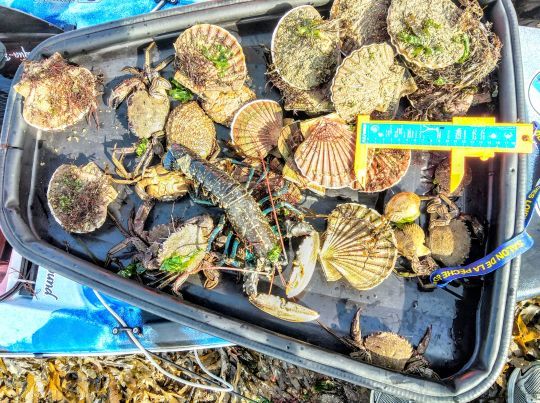
Once the harvest is successful, an important moment comes, it is the preparation for the consumption. Back home, I put them in closed plastic boxes. I leave them in the vegetable bin of the fridge to degorge for 36 to 48 hours. They will give back water that will have to be emptied from time to time, about every 8 hours.
At the end of this time, you remove the head and guts and I clean under cold water. It will then be necessary to tap the flesh of the abalone with a wooden mallet on a board to soften the flesh. In a frying pan, a nice knob of salted butter, 2 or 3 minutes of cooking according to the size of the foot and it remains to enjoy its inimitable taste. There are also more elaborate recipes, but simplicity suits it so well.
